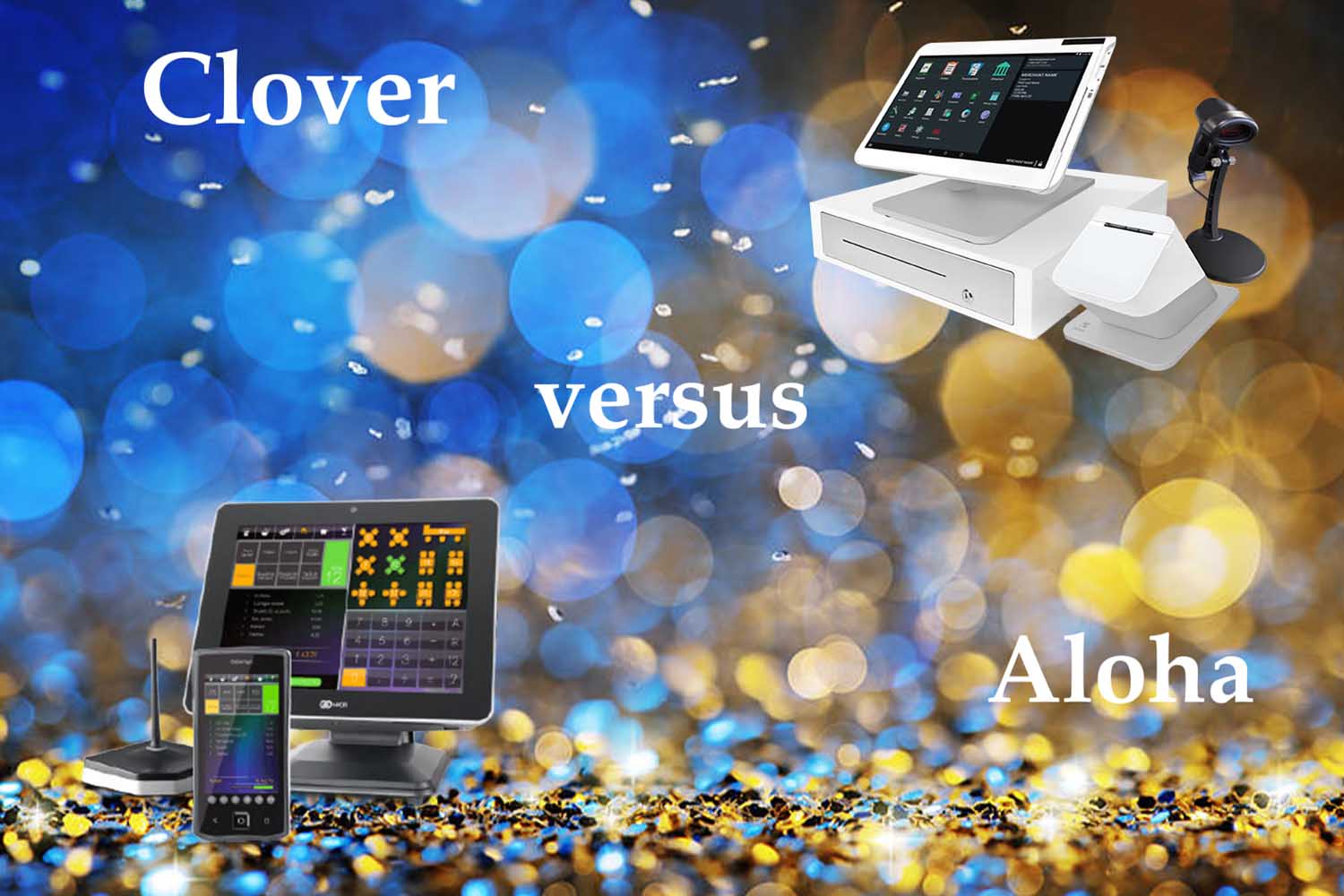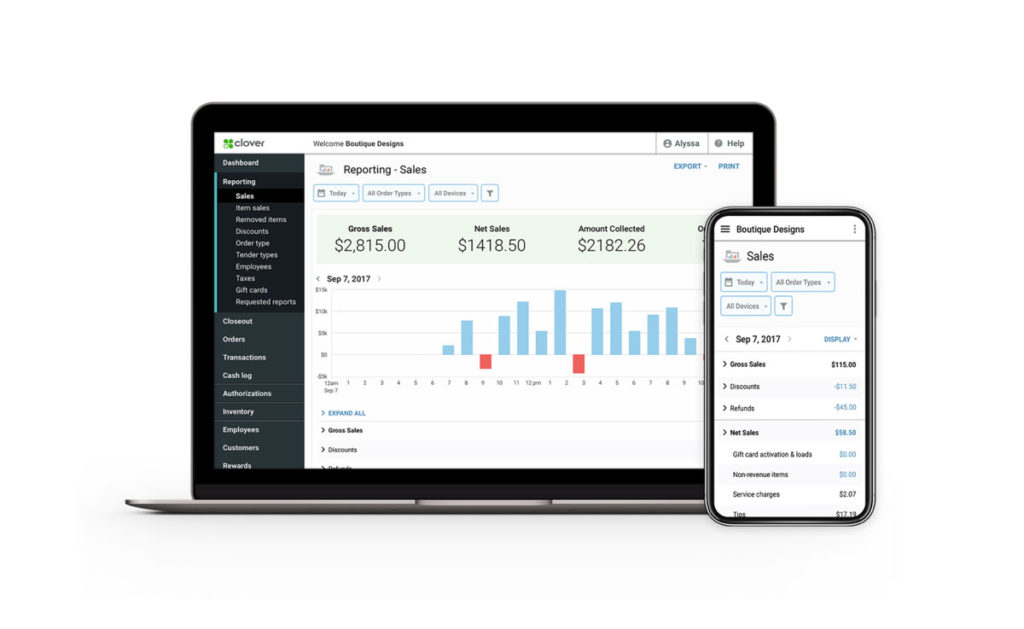Weighing all options is crucial in making the best decision for your restaurant. Of the many different processors to choose from, Aloha is the most recognized of all. They differ from Clover in many ways, but the question is, which company is best for you? This article is the first in a new series called Clover vs Aloha. It’s meant to be an overview of some of the basic differences between Clover and Aloha, so you can check out future articles that will go even more in depth about each provider.
Aloha is the market leader with their service in over 78,000 restaurants across the globe, but their service is mostly meant for large chain restaurants. A business that has many locations is the audience that Aloha caters too. Their equipment has a ton of complex features that can suit the needs of almost anything you could think of in a restaurant, but it does come at a price. The instillation is difficult and time consuming, while also requiring fees for installing hardware, upgrading software and configuring the menu. Since the base code is so old, it can bug out at times hard to use and difficult to navigate.
Clover is the kind of system that could work almost anywhere because of the integrations and features that can be added but it still doesn’t have as many as Aloha. Clover’s system is a very easy to use interface and covers all the necessary functions of restaurants of all size. Any and all software upgrade are free, but with Clover you still have to pay to upgrade your hardware.
Hardware and Software –
This is the real bread and butter when it comes to weighing out options because which hardware and software you choose will decide the ease of use of your restaurant.
Aloha:
Aloha has an extensive feature set that could be overwhelming for someone who isn’t familiar with the POS already but perfect for someone who knows how to use it. Even Aloha’s website is hard to use without prior knowledge.
Hardware:
They have three different types of desktops to choose that all vary in size. There is a 10”, 12” and 15” version. A handheld device from Order man is an available also for table size ordering. They run on windows and android and require Windows 10 or higher to use. Their mobile app is only available on Android. They accept all payment methods and are built with the busy restaurant order in mind.
Software:
Aloha is a hybrid system that has locally installed equipment. It’s not innately cloud based but there is an option to buy Aloha restore which is back up all of your data. The inventory management is amazing that’s why large businesses benefit most from it. It was made for restaurants with a high number of servers and high turnover in the day. There is a loyalty program and customer feedback. All of the features you can think are there, but they all come at a price.
Clover:
Hardware:
Clover offers three different pieces of hardware also, the Clover Station, Clover Flex and Clover Mini. The Clover Station has a 12” screen and is made with sleek white glass and brushed aluminum. It also has a swivel screen that can flip the screen to the customers. The Clover Mini is a smaller compact countertop POS that has the interface of that’s similar to a smartphone and the Clover Flex if you ever need to take your POS on the go.
Software:
Clover’s POS is relatively simple to use and easy to learn. It’s a cloud-based system and you can access the software from anywhere with a stable connection whether that be LTE or Wi-Fi. and has an Appstore with over 400 different apps. Anything that needs to be added can be done there but for a restaurant in particular, most of the functions are used in Clover Dining.
Comparing Price –
The other thought that’s probably on everyone’s mind is, how expensive is each company? Well there’s no easy explanation to that answer. Aloha doesn’t have any information online about their pricing at all. If you want to find out more, you have to set up a demo with a representative and let them explain everything. The same goes for Clover or any ISO that sells Clover. There are retail prices for some of the equipment online but the only way to be certain is to contact them and figure it out for your specific business because everyone is unique.
Conclusion –
That covers all of the basics of both companies, now you have a good foundation and overview of both Clover and Aloha but go out and do some more research to solidify what you already feel.
Share on facebook
Facebook
Share on twitter
Twitter
Share on linkedin
LinkedIn
Share on pinterest
Pinterest
Share on whatsapp
WhatsApp





